Printable Version of Topic
Click here to view this topic in its original format
GMC Forum _ THEORY _ Cadences
Posted by: Andrew Cockburn May 26 2008, 04:30 PM
Foreword by Andrew
This is the first in a new breed of theory lesson for this board. Sadly, owing to other GMC commitments, I have been too busy for a while to write any new theory lessons. DeepRoots has very kindly agreed to help out a little with this. This lesson was entirely written by him, and fits neatly into the published lesson plan, and I am proud to add it to my theory board! In future we hope to bring you more collaborative theory lessons and keep the theory rolling in!
So, over to DeepRoots ...
--
Cadences can be seen as 'musical punctuation'.
A cadence is a formula that signifies the end of a musical phrase, like punctuation in written language. For our purposes a cadence may be regarded as a harmonic formula, usually consisting of a pair of chords, that also often has the important function of defining the key of the music.
Cadences give phrases a distinct finish, which can, for example, show the listener whether the piece is to be continued or concluded.
There are four basic kinds of cadence:
Perfect Cadence (or authentic or standard cadence): V - I
Resolution consisting of the chords V - I. The strongest and most used cadence in music makes for the most decisive resolution at the end of any piece. This cadence sounds "finished", it is nearly always used at the end of a piece.
Imperfect Cadence (or half or open cadence): I - V
Resolution involving a movement to the dominant is the next most popular cadence, whether preceded by ii, IV, or I, or any other chord. It leaves the tonality unfinished and prepares the way for another section of music.
Plagal Cadence: IV - I
Resolution consisting of the chords IV - I. Also informally known as the "Amen" cadence as it is used quite often at the end of a hymn for instance. It is somewhat rare compared to other cadences.
Interrupted Cadence: V - vi
Movement from chord V to any chord except the I chord (typically vi, which is the relative minor key chord in major key). Again, an important cadence for giving music a thirst for continuation, it really makes you want to hear resolution!
Cadences in action
So that you can test out these cadences, we'll use the key of C major to illustrate their sound and purpose.
First, strum out a C major chord, this will get your ear thinking in terms of C major before we start looking at the cadences it is involved with.
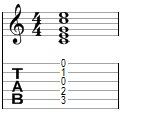
Perfect cadence: V- I
In the key of C major, this would give us the progression G – C
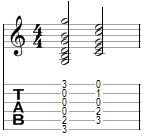
Pay attention to how this sounds "finished". The C major chord resolves the piece. In a rock context, power chords may be used. It is typical for rock guitarists playing in the key of E minor to end the song with an E5 chord.
Imperfect cadences: I - V, ii - V, IV - V
These imperfect cadences give us the following progressions, respectively.
C – G.
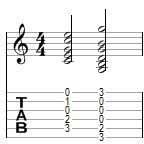
Dm - G
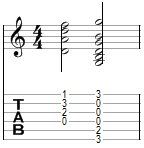
F - G
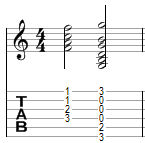
Though it sounds unfinished and would often lead into another section of music, this is sometimes used to end a song, which can give the listener an unexpected "surprise".
Plagal Cadence: IV - I
Again, in C major, this would give us the progression F – C.
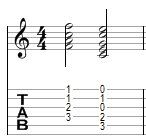
What to say? Sounds very hymn-like to me. Don't feel obliged to use this in a rock context
Interrupted Cadence: V – vi
In C major, this would be G – Am
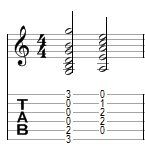
Though it doesn't resolve like the perfect cadence and does leave you expecting resolution, I do like the sound of this cadence for ending a song. It could be a sorrowful way of ending a happy and otherwise up-beat song.
Okay, so now you know a little about cadences. Try to apply some of these cadences to your own playing and also try to listen out and spot different cadences in music that you're listening to. Remember the all important sound of the perfect cadence; recognising its characteristic sound will help you find the key of a song!
Posted by: Muris Varajic May 26 2008, 04:46 PM
Ahh,it just brought me back to good old days
when I was in Music High School
learning all these cadences,thanks Deep. ![]()
Posted by: Rolls May 26 2008, 06:20 PM
Cool topic....glad to see some more theory lessons ![]()
Posted by: Kristofer Dahl May 26 2008, 06:40 PM
Wow Deeproots (and Andrew) this is a very needed topic ![]() - after all this has to be considered basic knowledge for writing chord progressions! Thanks so much - it's great to see that the theory lessons are up and rolling again - Andrew has set high standards and they are matched here, well done both of you!
- after all this has to be considered basic knowledge for writing chord progressions! Thanks so much - it's great to see that the theory lessons are up and rolling again - Andrew has set high standards and they are matched here, well done both of you! ![]()
Posted by: Ivan Milenkovic May 26 2008, 07:17 PM
Very nice addition to theory lessons! Great job ! ![]()
Posted by: skennington May 26 2008, 07:24 PM
One again, thanks guys. I have added this to my theory category as a must to learn for chord progression! ![]()
Posted by: DeepRoots May 26 2008, 08:47 PM
Thanks for your kind words, guys.
Posted by: Kristofer Dahl May 31 2008, 08:51 PM
I have studied this one a little more and I must say I again that I really like it ![]() A cool addition would be to thow in one or two chord progressions and have the cadences noted in roman numbers above the chords - to further examplify.
A cool addition would be to thow in one or two chord progressions and have the cadences noted in roman numbers above the chords - to further examplify.
Thanks again Deeproots and Andrew!
Posted by: Andrew Cockburn Jun 3 2008, 01:45 PM
Thanks for the suggestions Kris, we will see what we can do ![]()
Posted by: Col Roberts Jun 4 2008, 07:43 AM
Well done guys. The third example of an imperfect cadence (F-G) has the chords F and C in the musical notation and tab ...
and F to C is a plagal cadence as we now know ![]() .
.
Cheers.
Posted by: fkalich Jun 5 2008, 05:47 AM
Good to see that you dumped the lame Star Trek avatar, and went with an actual personal photo.
carry on.
Posted by: Andrew Cockburn Jun 5 2008, 12:42 PM
carry on.
Why, thank you mr Kalich!
Posted by: Col Roberts Jun 7 2008, 10:02 AM
and F to C is a plagal cadence as we now know
Cheers.
Hi Deep Roots and Andrew,
I was just pointing out an error in the third example of an imperfect cadence ...
Cheers.
Posted by: Andrew Cockburn Jun 7 2008, 01:30 PM
I was just pointing out an error in the third example of an imperfect cadence ...
Cheers.
Oops, sorry, missed that! I'll correct it at once, thanks!
Edit : Done!
Powered by Invision Power Board (http://www.invisionboard.com)
© Invision Power Services (http://www.invisionpower.com)
